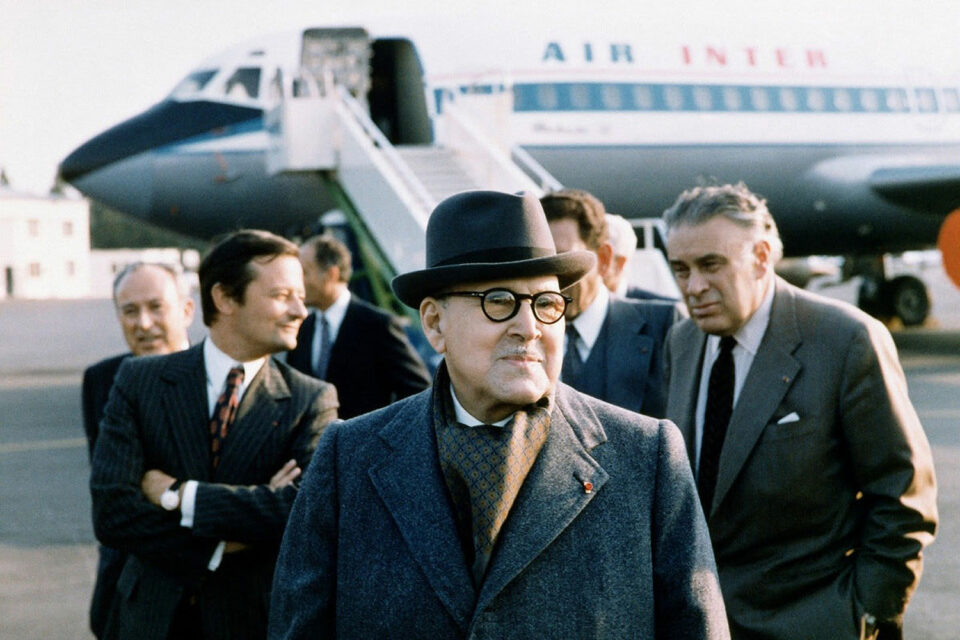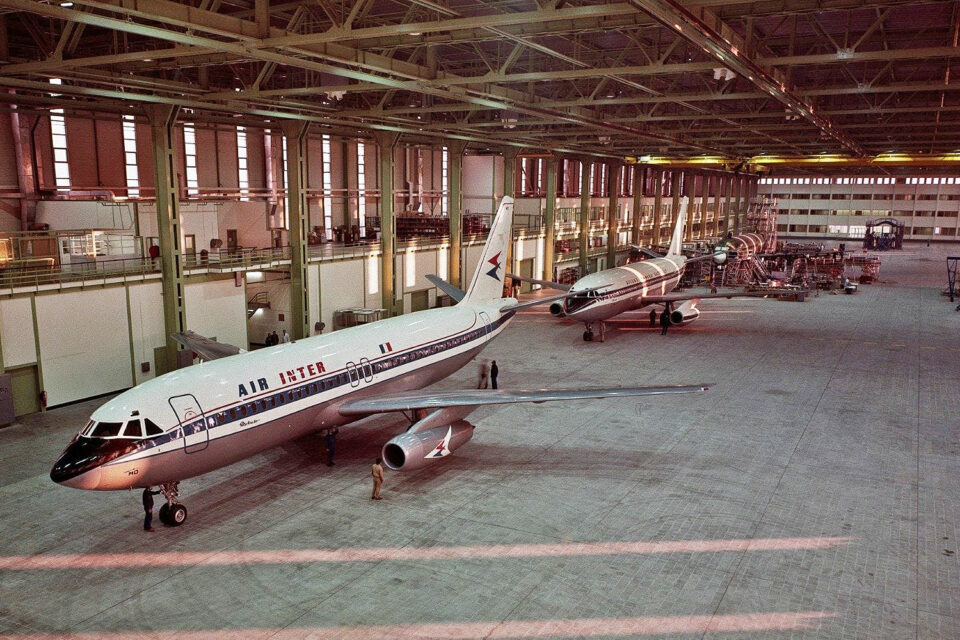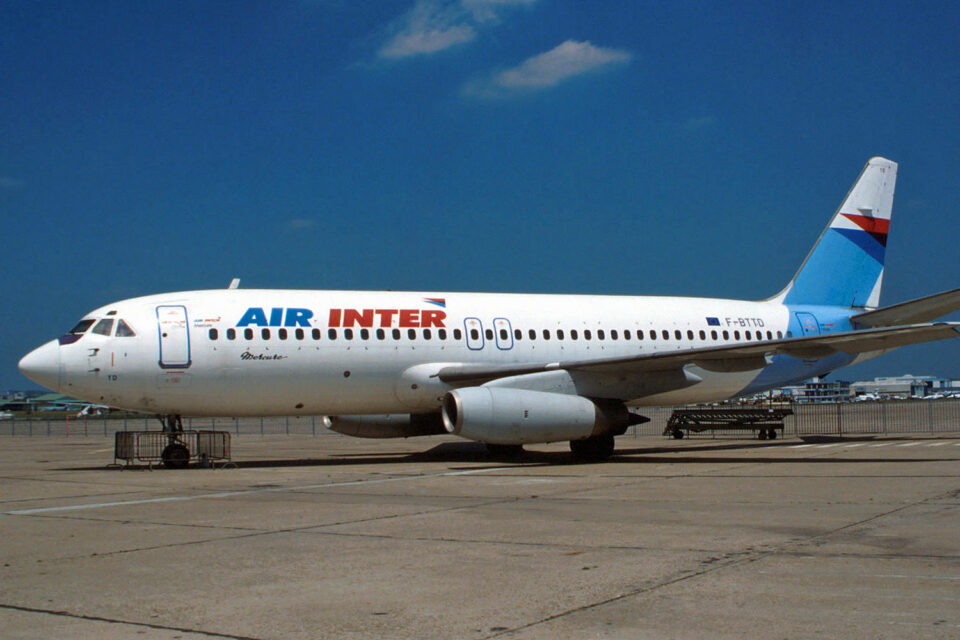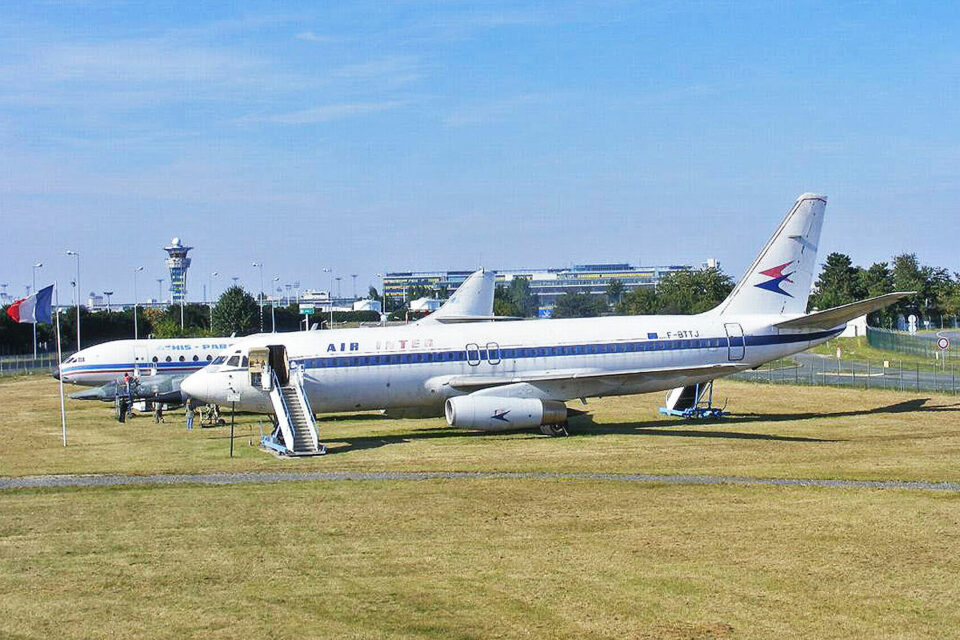In 1967, the DGAC (French aviation authority) suggested that the manufacturer Dassault, famous for its Mirage fighters, develop a commercial aircraft capable of rivaling the Boeing 737-200 and the Douglas DC-9, both from the United States.
Dassault accepted the challenge and the Mercure jetliner was born, a twin-engine jet with a design similar to the 737.
The decision to invest in an aircraft with small capacity and range was based on studies that showed that 80% of routes corresponded to less than 1,500 km.
Follow Air Data News: WhatsApp | Google News | Instagram | LinkedIn | Twitter | Facebook
In just two years, Dassault presented the first prototype of the ‘French 737’, which flew for the first time on May 28, 1971 and five days later, on June 2, it was presented at the Paris Air Show.

Known as the Mercure 100, the aircraft could be configured with 110 to 120 seats, but Dassault preferred to expand capacity to 150 seats and offer a range of up to 1,700 km.
Larger and faster than the 737
Like the Boeing 737, the French jet was powered by Pratt & Whitney JT8D-15 turbofan engines. But its advanced aerodynamics employed specially developed wings to make the ascents and descents of short-distance flights more efficient.
To develop them, Dassault used software, something that was uncommon at the time. Furthermore, the fuel tank installed in the wings was smaller due to the aircraft’s short range, which reduced its structural weight and autonomy by around 10%.
The name Mercure was chosen by Marcel Dassault, who stated that “I wanted to name a mythological figure and I could only think of someone who had wings on his helmet and ailerons on his feet – hence the name Mercure (Mercury).”

Compared to the 737-200, the version at the time, the Mercure carried more passengers, flew faster and was more suitable for short-haul flights. But none of that was enough to make it a sales success.
To enable the large-scale production expected for the aircraft, Dassault established four factories on French soil (Martignas, Poitiers, Seclin and Istres).
In 1972, the carrier Air Inter, which had a shareholding from the French government, placed an order for 10 aircraft, and one of the prototypes was later received by the airline.

The first series-production Mercure took flight on July 19, 1973, and DGAC civil certification was obtained on February 12, 1974.
The first commercial flight took place on June 4, 1974 between Orly (Paris) and Toulouse.
Oil crisis
The outlook for the new French jet quickly became turbulent. Three months after the first series-produced plane took off, the oil shock hit in October 1973, reducing airlines’ margin and ability to acquire new aircraft.
Furthermore, these were times of dollar devaluation and higher inflation rates in Europe than in the United States, which favored competitors Boeing and McDonnell Douglas.
But Dassault also failed in the Mercure design by ignoring the ability to undertake longer flights, which its rival 737-200 was capable of.
Its low autonomy literally became an infamous joke: legend has it that “the aircraft did not have enough range to leave France”.

To cover production costs, Dassault needed to sell between 120 and 150 units of the Mercure, but not even French airlines are interested in the commercial jet, including Air France, which embarked on the dream of the more expensive Concorde.
Dassault even tried to reverse the situation by launching the Mercure 200C version, with a much greater range, of up to 2,500 km, but it was too late and the project never got off the ground.
Faced with the dilemma of moving forward or risking bankruptcy, Dassault closed the assembly line on December 19, 1975.
Follow ADN: Instagram | Twitter | Facebook
Ironically, the 11 Dassault Mercures that entered service operated until 1995, transporting more than 44 million passengers on around 440,000 flights over 360,000 hours, with a regularity of 98%. Without any accidents, by the way.
As for Dassault, as we know, it remains active in the market with its Rafale fighter jet and the Falcon line of private jets, which are highly commercially successful.

